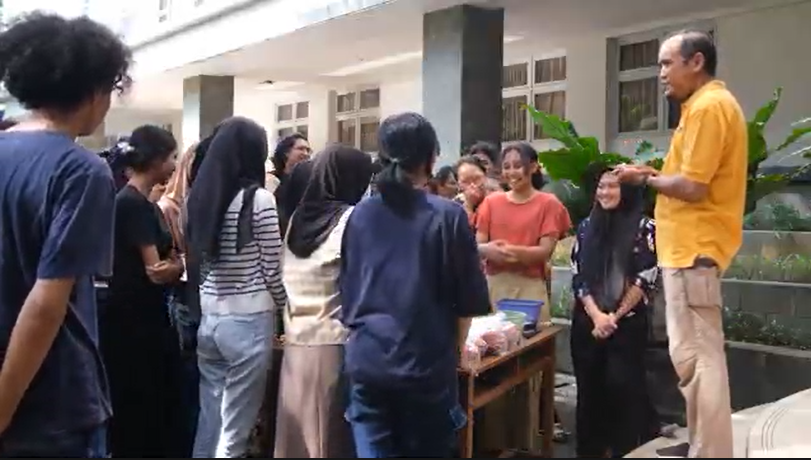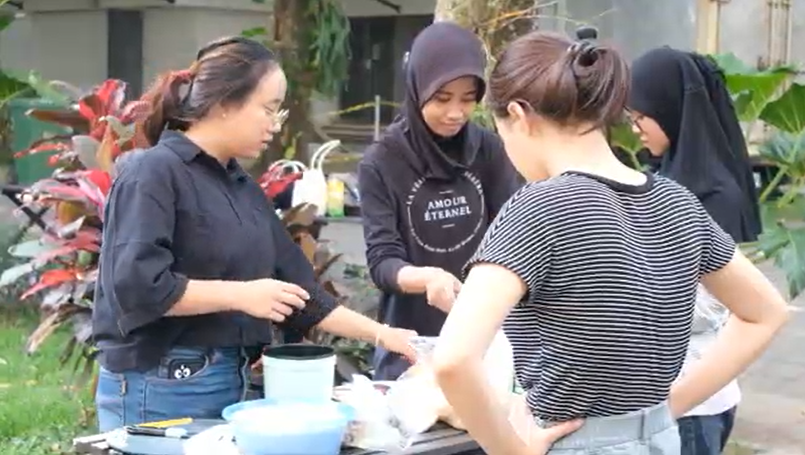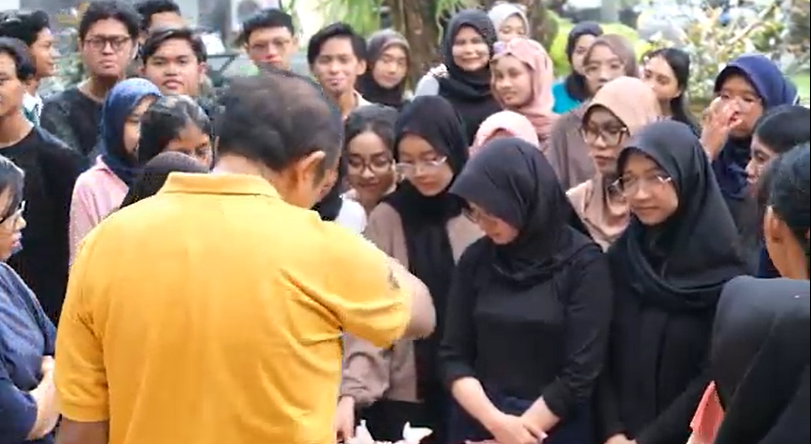
On Saturday, June 8, 2024, the Faculty of Cultural Sciences, Universitas Gadjah Mada, held a course on Ethnography of the Sumatra Region which took place in the courtyard of the Soegondo building. The event, which began at 09.00 WIB until 14.00 WIB, aims to provide an in-depth understanding of the human and ethnic cultural dynamics in the Sumatra region and hone appreciation for local cultural forms and practices. The participants of this activity were all students of the Faculty of Cultural Sciences who took the Ethnography of the Sumatra Region course, totaling 74 students. In addition, the event was also attended by several INCULS students who participated as part of the program.
This practicum course in the form of cooking together is an affective supplement to build the affective side of students such as cooperation, discipline, dedication, ethics and responsibility. Through this joint cooking activity, students are expected to understand that food is not as simple as buying and enjoying. There is a cognitive process of recognizing taste, honing taste sensitivity through combination, which overall requires patience, accuracy, cooperation, and empathy. Furthermore, this process is expected to have a better attitude of appreciating food, not wasting food, and appreciating local food which is now starting to be abandoned.

The event began with a general explanation by the lecturer regarding the rules of the game, for example related to the order and time of implementation. Furthermore, the lecturer explained about the main types of spices used to cook rendang. All the spices were displayed on a table in front of Soegondo’s terrace. After enough explanation and questions and answers, each group took a ‘ration’ of 1 kilogram of beef that had been prepared, as well as the basic spices that had been prepared on display. For the spices, they took their own according to their own needs.
In the previous week, technical cooking issues had been discussed in class. Students are allowed to find their own rendang recipes. Therefore, it is possible that there are differences in additional spices and cooking techniques. Some include brown sugar, some include grated coconut. There are also those who include turmeric leaves.

At 09.30am, the students returned to their desks and started cooking. While the students were cooking, the lecturers and their ‘assistants’ were also doing the same. The atmosphere became exciting. Moreover, it was also announced that there would be an assessment conducted by the ‘jury’. The judges were interns in the department who were actually tasked with documenting the activities. Because there will be this ‘assessment’ the students become excited. Several times students came to the lecturer’s desk to ask about cooking techniques or ask for additional spices. Some students were also seen making phone and video calls to their parents about the ‘correct’ cooking procedures. Although it was obvious that the majority of the students were not used to cooking, they were in good spirits. Occasionally shouting and chattering cheerfully. Occasionally came to the lecturer’s desk to compare his cooking with his group.
Finally at 12:30 the cooking program according to the agreement was stopped. Then the impromptu judges came to each group to give an assessment based on two criteria: appearance of cooking and taste. Based on the accumulated scores, group 3 became the champion for the flavor category, and group 4 became the best in terms of the appearance of rendang (looks very beautiful brown, apparently added brown sugar, and it makes it Jogja rendang). One interesting thing was also the creation of group 5 who made rendang with a soft and very light flavor, making it suitable for tourist consumption.

The event was closed with a brief review from the lecturer about the whole process and student impressions. The event was closed with a group photo and a meal together. Some students were even eager to join the queue for rendang made by the lecturer.In terms of achievements, this event can be said to be a success. As the main goal of the ethnography course is appreciation and respect for differences, this event clearly provided new experiences for students about nasi padang. They had never imagined that it would be that difficult to enjoy rendang rice. It takes time, commitment, and intelligence in organizing composition and technicalities. This made students realize to appreciate traditional food more, even if they can afford it.
Another important thing to emphasize is that lectures do not always have to be about reviewing and paper-oriented assignments. This activity is one of the ways that lectures can be more relaxed and enjoyable while still being critical and academic.

